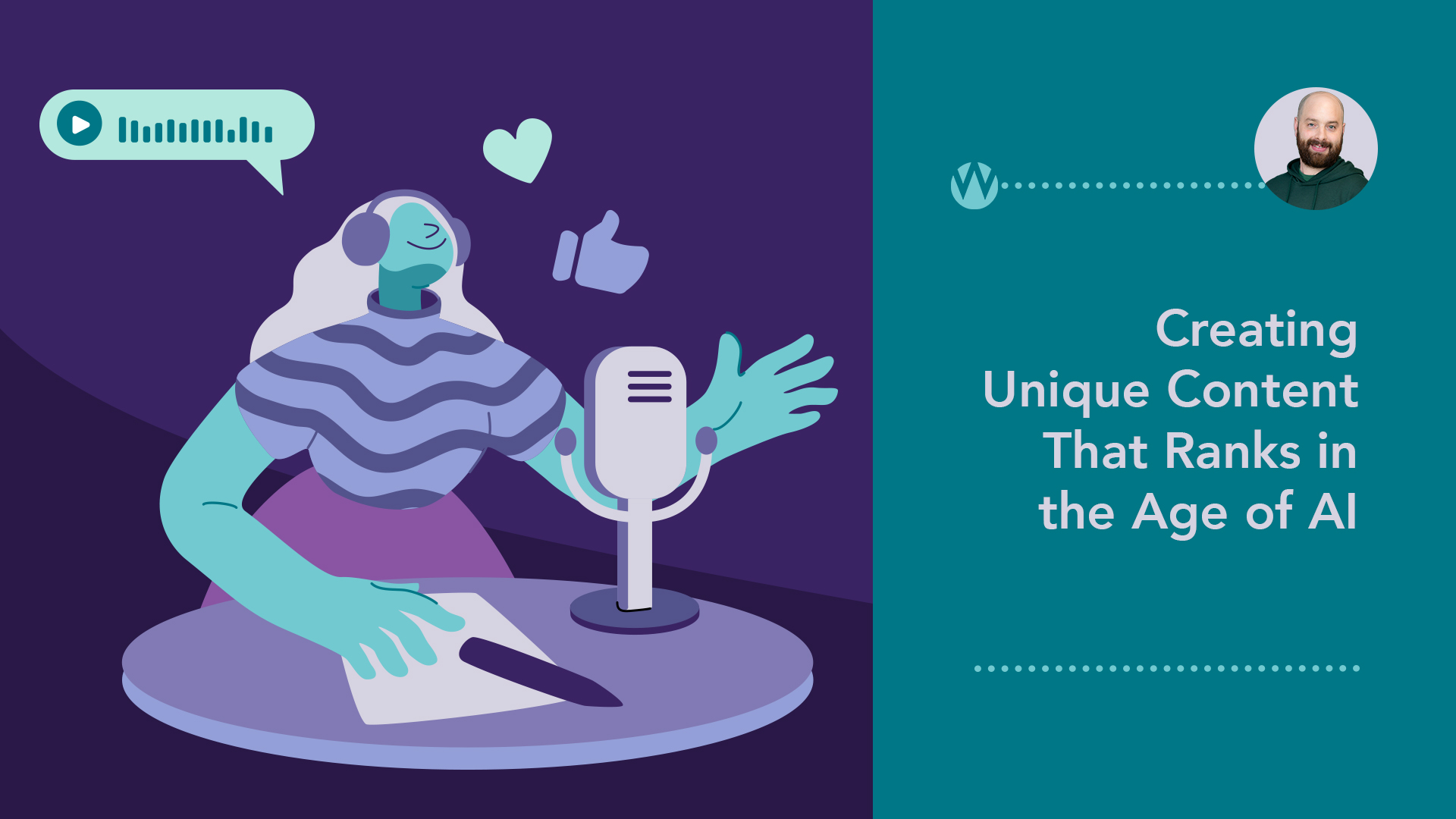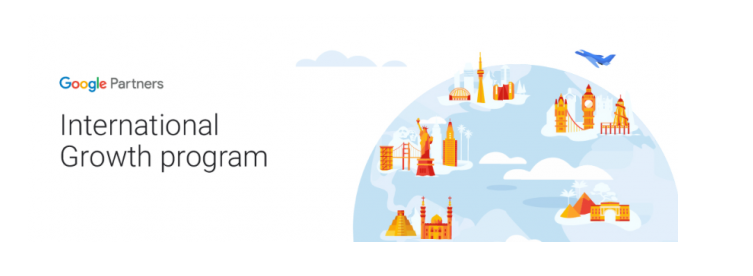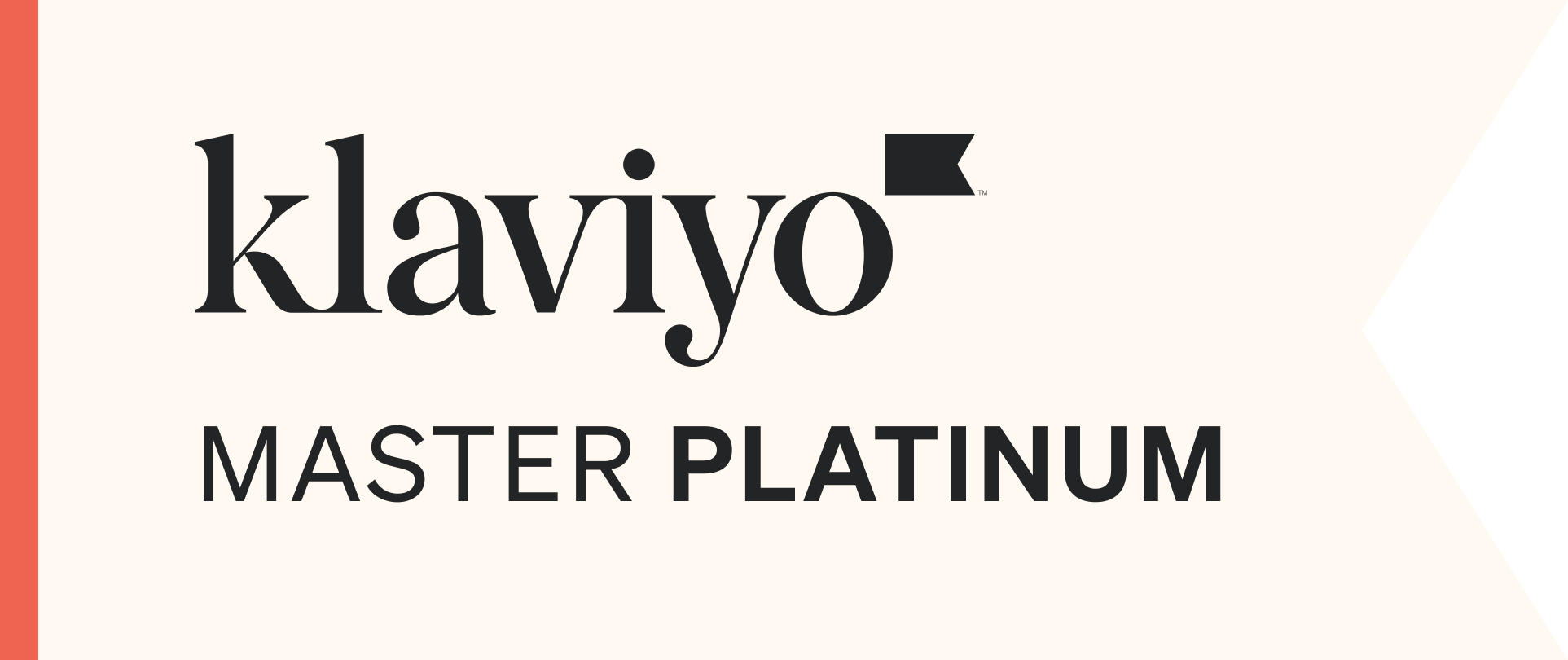By Ian Booth on 19 Feb 2025

The digital world is overflowing with content attempting to attract organic traffic from Google, with much of it being generic and forgettable. The challenge for businesses today is to create content that stands out in this saturated landscape, especially with the rise of AI writing tools. AI has made it easier than ever to produce content quickly, but this has also led to an increase in low-quality, unoriginal content.
As mentioned in our post; AI Search and the Future of SEO; a major shift is underway in how people search for information online. Generative AI is becoming more prevalent and is having a significant impact on how businesses approach SEO and content creation. We need to lean heavily on what makes us unique and we need to leverage our humanity for all it’s worth—so that we can stand out in an increasingly noisy internet.
Here we will explain some things we know about ‘how Google works’ and share some ideas regarding how we can continue to produce content that will drive our digital marketing growth into the future.
Producing Content in the Era of AI-Driven Saturation
Generating content for the web has never been so easy, but on the flip side—getting your content noticed (or ranked by Google) is becoming increasingly difficult.
The rise of AI writing tools like ChatGPT has led to a surge in low-quality content being produced at scale. These tools can quickly generate large volumes of text, which are essentially rehashing or spinning existing content into a new article. It's not unique. It's a real race to the bottom.
This presents a challenge for Google, which must filter out this spun content and surface genuinely useful content for its users in the search results—otherwise, people may stop trusting Google search results for their information.
Google has clearly been responding to this challenge with various big updates to its ranking algorithms and by publishing guidelines for creating helpful content (and guidelines on AI-generated content specifically), so we have no excuse!
The Google helpful content guidelines emphasise creating content that demonstrates E-E-A-T (Experience, Expertise, Authoritativeness, and Trustworthiness). This means focusing on providing original information, insights, and analysis—rather than simply summarising what others have said.
Very often, people can tell the difference between AI-produced content and a real human's voice in an article. AI-generated content often lacks the nuance, personality, and depth of human-written content. Google is increasingly focused on rewarding original, high-quality content that demonstrates these qualities.
The Pitfalls of Producing Content With AI
AI excels at summarising existing web content, but it struggles to generate original insights and struggles to carry a unique brand voice (by default). Content simply regurgitating existing information is likely to be outranked by AI-generated summaries (AI overviews are rolling out worldwide on Google). These AI overviews are already collating information and if our articles don’t bring anything new to the table, then why would Google care about them?
Google has very clearly stated that content should be written for human engagement, not solely for search engines. They aim to phase out copycat content, prioritising unique and insightful content. While utilising AI in content creation is not against the guidelines, the intent behind your content should be to help your audience with useful information.
Helpful Content Will Always Shine Through
Google's ranking algorithms favour helpful, reliable, and people-first content. SEO efforts should be directed toward enhancing the visibility of such content, as opposed to manipulating rankings with search engine-first content. This rang through for a recent Innopharma Education campaign— as is evident in the SEO-content marketing case study published a while ago. Google's automated systems prioritise helpful content by identifying factors that demonstrate E-E-A-T.
E-E-A-T (Experience, Expertise, Authoritativeness, and Trustworthiness) is a framework used by Google to evaluate the quality and credibility of content]. Although not a direct ranking factor, optimising for E-E-A-T can indirectly improve search performance.
Harnessing AI To Create Helpful Content
Using AI can make your content more useful and helpful to the end user! However, it's crucial to use AI strategically to produce quality content while navigating the challenges of AI-generated saturation. In her article "Achieving Quality and Scale in AI-Driven Content Marketing" Lisa Woods highlights how AI can be a valuable tool for content marketing when focused on quality and user experience.
Lisa emphasises that while readily available AI tools like ChatGPT can generate content quickly, the output often lacks originality and brand voice. To overcome these limitations, Wolfgang Digital developed a custom GPT workflow. We focus on three key areas to enhance the quality and SEO performance of AI-generated content:
- Search Optimisation Rules: We trained our GPTs on Google's ranking principles and optimisation frameworks, ensuring content is not only engaging but also optimised for search engines.
- Brand Tone of Voice: By feeding the GPT model with extensive examples of our client's brand language, style, and messaging, we created an AI capable of producing content that reflected each brand's unique voice.
- SEO Insights: Our custom GPT is trained on the expertise of our SEO team, including advanced keyword analysis techniques and content auditing skills, enabling it to produce content aligned with high-level industry standards.
This approach allowed our team to scale content production while maintaining quality, resulting in measurable outcomes that consistently exceed expectations.

Google, Information Gain and Your Content
Beyond helpful content, Google is very likely focusing on a concept known as "information gain." This refers to the degree to which content provides new, valuable, and insightful information that isn't already widely available. As Andrew Holland wrote on SEJ, the concept is rooted in information foraging theory, which suggests that users, like animals foraging for food, seek information that offers the most value with the least effort.
Google's patent on "Contextual Estimation of Link Information Gain" further underscores their commitment to rewarding content that expands the existing knowledge base.
Utilise People and Their Profiles
Demonstrating E-E-A-T is crucial for achieving information gain. This can be achieved by showcasing the expertise and experience of content creators/authors. Author boxes linking to authors' profiles on other platforms can build E-E-A-T for both the author and the website. Include details about each author, such as their qualifications, career, and expertise. Avoid publishing authorless content, as readers value transparency and knowing the source of the information. In the eyes of an algorithm, this could give more weight to the words on the page, once it’s relevant to the person’s background.
Furthermore, people with real-world experience in a given subject matter can share genuinely unique insights and perspectives on a topic—this is what can give you an edge on search.
Topical Authority Is Important
Topical authority refers to how much authority a website or brand holds on a specific subject, establishing it as a trusted source within that niche. For example, if you sell certain product types or services, then it’s a good idea to demonstrate your expertise on many aspects of that topic and closely related topics.
Building topical authority goes beyond simply publishing a large volume of content. It involves providing comprehensive, insightful, and original information that thoroughly covers all aspects of the topic. Links from other authoritative websites in your niche are also vital for signalling topical authority to search engines.
To earn an ‘information gain’ advantage in SEO, consider:
- Providing Data-Driven Insights: Incorporate proprietary data, research findings, and unique statistics to offer valuable insights that are difficult for competitors to replicate.
- Conducting Expert Interviews: Tap into the knowledge of industry experts and thought leaders to gain valuable perspectives and insights. This can come from in-house potentially, or you could reach out to relevant people in the industry too, perhaps.
- Focusing on User Intent: Anticipate the user's needs and questions, and provide content that goes beyond simply answering the initial query. Think about the next steps they might take or the related information they might seek.
- Structuring Content for Information Density: Format content to be easily digestible, using headings, lists, visuals, and concise language. This helps users quickly find the information they need and is especially important for voice search.
- Producing multimodal content: This can manifest as photography, video, audio, graphics, slide decks or whatever other ways of sharing information that you can think of. Just be sure it’s what your audience is interested in. Adding information in new formats is a great way to add something to the existing information landscape.
By focusing on information gain, utilising expert insights, and structuring content for user engagement, websites can position themselves for long-term success in the ever-evolving world of SEO.
Content Hubs Should Add to the Overall User Experience
Creating content that provides ‘information gain’ should go beyond just the information itself. The way the content is presented and connected within a website can not only greatly enhance the user experience, especially for those on a specific learning (or buying) journey, but it can recontextualise pieces of information and create unique flows. This is where uniqueness—within content hubs— can be particularly effective.
Content hubs act as centralised repositories of information on a specific topic or theme. They allow users to easily navigate and discover related content, creating a seamless and engaging learning experience. Here's why content hubs can be a brilliant experience for unique to your target audience:
- Organised Structure: Content hubs organise information in a logical and structured way, making it easy for users to find what they need. This can involve categorising content, using clear headings and subheadings, and providing internal links to related resources. We can organise content in many different ways, and with some thought, we can create a journey like no other, tailored to the needs of our audience.
- Depth and Breadth of Information: A well-designed content hub will offer a comprehensive overview of a topic, covering various aspects and providing content in different formats (articles, audio, videos, infographics, etc.). This caters to different learning styles and preferences.
- Guided Journey: Content hubs can guide users through a learning or buying process. This can be achieved by creating a series of interconnected articles or resources that build on each other. For example, a content hub on "bathroom remodelling" could start with articles on planning and budgeting, then move on to design inspiration, and finally provide resources for finding contractors.
- Engaging Experience: Content hubs can incorporate interactive elements, such as quizzes, calculators, and downloadable resources, to make the learning experience more engaging and unique.
By creating content hubs that offer a rich and informative user experience, websites can attract and retain visitors, establish themselves as authorities in their niche, and ultimately achieve their marketing goals.
The Wolfgang Essential Takeaway
To ensure your content stands out in the age of AI and effectively leverages Google's focus on information gain and expertise:
- Develop a clear and consistent brand voice that reflects your company's personality and resonates with your target audience.
- Prioritise creating content that provides unique insights, data, or perspectives that users won't find elsewhere. Think "information gain," not just "content creation."
- It's ok to use generative AI in your content production process but use it strategically to generate enhanced content, not quick content. That is a race to the bottom.
- Organise your content strategically and uniquely within your website. Content hubs can provide an excellent user experience for those on a specific learning or buying journey.








